Your cart is currently empty!
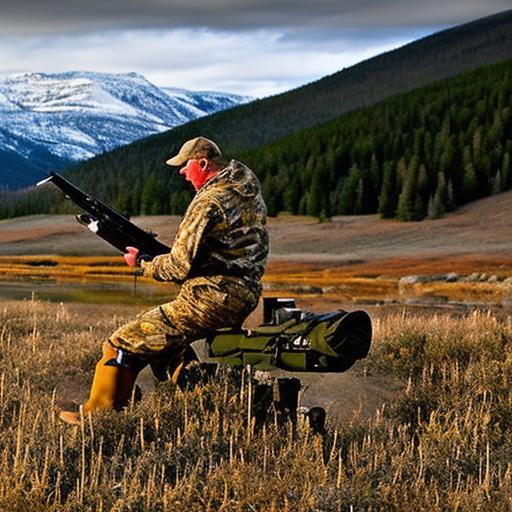
The Thrill of Late Season Elk Hunting: Tips and Strategies for a Successful Hunt

Late season elk hunting can be a thrilling and rewarding experience for hunters. As the temperatures drop and the snow begins to fall, elk behavior changes, presenting unique challenges for those seeking to harvest these majestic animals. Late season elk hunting typically takes place in the months of November and December, when elk are in their winter range and are focused on finding food and staying warm.
One of the main challenges hunters face during this time is locating the elk. As the weather gets colder, elk tend to move to lower elevations in search of food. They also become more wary and cautious, making them harder to spot and track. Additionally, the snow can make it difficult to navigate through the terrain, adding another layer of difficulty to the hunt.
Key Takeaways
- Late season elk hunting presents unique challenges for hunters
- Understanding elk behavior is crucial for success in late season hunting
- Choosing the right gear is important for staying warm and comfortable in cold weather
- Scouting in late season requires knowledge of where elk are likely to be and what they are eating
- Hunting techniques such as calling and spot and stalk can be effective in late season
- Planning for weather, terrain, and timing is essential for a successful hunt
- Safety should always be a top priority when hunting elk in late season
- Proper field dressing and butchering techniques are important for preserving meat quality
- Late season elk meat can be delicious when cooked using the right recipes and methods
- Late season elk hunting can be a rewarding experience for those willing to brave the cold and put in the effort.
Understanding Elk Behavior in Late Season: Key to Success
Understanding elk behavior during late season is crucial for a successful hunt. As mentioned earlier, elk tend to move to lower elevations in search of food during this time. They are focused on finding areas with ample forage, such as grasses and shrubs, to sustain them through the winter months.
To locate elk during late season, it is important to pay attention to their feeding patterns. Look for areas with fresh tracks and droppings, as these indicate recent activity. Elk are creatures of habit, so once you find a feeding area, they are likely to return to it regularly.
Choosing the Right Hunting Gear for Late Season Elk Hunting
Having the right gear is essential for late season elk hunting. The cold temperatures and snowy conditions require hunters to be properly equipped to stay warm and comfortable throughout the hunt.
Some essential gear for late season elk hunting includes:
1. Warm clothing: Layering is key when it comes to staying warm in cold weather. Start with a moisture-wicking base layer, followed by an insulating layer, and finish with a waterproof and windproof outer layer. Don’t forget to wear warm socks, gloves, and a hat to protect your extremities.
2. Quality boots: Invest in a pair of insulated and waterproof boots that provide good traction. The snow and slippery terrain can make it challenging to navigate, so having reliable footwear is crucial.
3. Optics: A good pair of binoculars or a spotting scope is essential for spotting elk from a distance. Look for optics with high magnification and good light transmission for optimal visibility.
4. Backpack: A sturdy backpack is necessary for carrying your gear, water, and any harvested game. Look for one with a comfortable harness system and plenty of storage compartments.
Scouting for Late Season Elk: Where to Look and What to Look for
| Topic | Data/Metrics |
|---|---|
| Elk Population | Number of elk in the area, population trends over the years |
| Weather Conditions | Temperature, precipitation, wind speed and direction |
| Food Sources | Types of vegetation available, location of food sources |
| Water Sources | Location of water sources, availability of water |
| Topography | Elevation, terrain, vegetation cover |
| Signs of Elk | Tracks, droppings, rubs, wallows, bedding areas |
| Behavioral Patterns | Mating season, feeding patterns, migration routes |
Scouting is an important part of any hunting trip, and late season elk hunting is no exception. Knowing where to look and what to look for can greatly increase your chances of success.
During late season, elk tend to move to lower elevations in search of food. Look for areas with ample forage, such as grassy meadows or shrubby slopes. These areas are likely to attract elk as they try to bulk up before the harsh winter sets in.
When scouting for elk, keep an eye out for fresh tracks, droppings, and rubs on trees. These signs indicate recent elk activity in the area. Pay attention to the direction of the tracks and the size of the droppings, as this can give you an idea of where the elk are heading and how many are in the area.
Best Hunting Techniques for Late Season Elk: Calling, Spot and Stalk, and More
There are several hunting techniques that can be effective during late season elk hunting. Each technique has its own advantages and challenges, so it’s important to choose the one that best suits your hunting style and the conditions you are facing.
1. Calling: Calling is a popular technique for elk hunting, especially during the rut. However, it can still be effective during late season. Use cow calls to mimic the sound of a female elk in distress or use bugle calls to imitate a bull elk. This can attract curious elk and bring them within range.
2. Spot and stalk: Spot and stalk is a technique where hunters spot elk from a distance and then stalk them on foot to get within shooting range. This technique requires patience, stealth, and good optics to locate elk from a distance.
3. Still hunting: Still hunting involves moving slowly and quietly through the woods, scanning the area for any signs of elk. This technique is effective when elk are bedded down or moving slowly in search of food.
Planning Your Late Season Elk Hunt: Weather, Terrain, and Timing
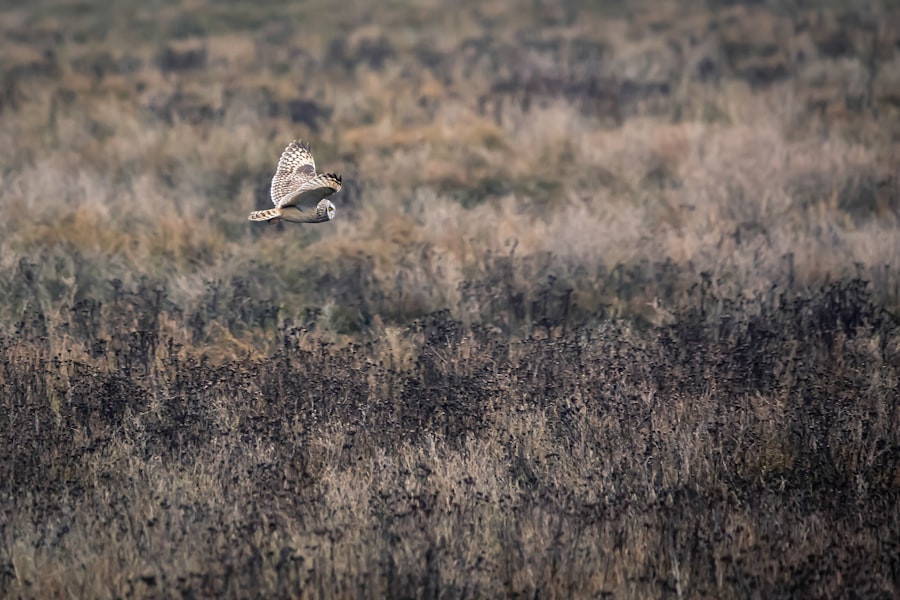
When planning a late season elk hunt, there are several factors to consider to increase your chances of success.
Firstly, pay attention to the weather forecast. Late season hunts can be challenging due to cold temperatures and snowfall. Make sure you are prepared for these conditions by packing appropriate clothing and gear.
Secondly, consider the terrain you will be hunting in. Late season hunts often take place in lower elevations where there is less snow and more accessible food sources for elk. Look for areas with ample forage and good cover for stalking.
Lastly, timing is crucial when planning a late season elk hunt. Elk behavior can vary depending on the specific time of year and weather conditions. Research the patterns of the local elk population and plan your hunt accordingly.
Safety Tips for Late Season Elk Hunting: Avoiding Hazards and Risks
Late season elk hunting can present certain hazards and risks that hunters need to be aware of to stay safe in the field.
One common hazard is hypothermia. The cold temperatures can cause your body temperature to drop, leading to hypothermia if not properly managed. Dress in layers, stay dry, and take regular breaks to warm up and refuel.
Another risk is getting lost or disoriented in the snow-covered terrain. Always carry a map, compass, and GPS device to help navigate through unfamiliar areas. It’s also a good idea to let someone know your hunting plans and expected return time.
Lastly, be aware of other hunters in the area. Late season hunts can be popular, so it’s important to practice good firearm safety and be aware of your surroundings at all times.
Field Dressing and Butchering Late Season Elk: Tips and Tricks
Field dressing and butchering an elk can be a challenging task, especially in cold weather conditions. Here are some tips and tricks to make the process easier and more efficient.
1. Start by field dressing the elk as soon as possible after the kill. This involves removing the internal organs to cool down the meat and prevent spoilage. Make a clean incision from the sternum to the pelvis and carefully remove the organs.
2. Use a sharp knife to remove the hide from the carcass. Start at the hind legs and work your way up towards the head. Take your time and be careful not to puncture any of the internal organs.
3. Once the hide is removed, quarter the elk by cutting through the joints. This will make it easier to transport the meat out of the field.
4. When butchering the meat, separate it into different cuts such as steaks, roasts, and ground meat. Trim off any excess fat or connective tissue for a leaner final product.
Cooking Late Season Elk: Delicious Recipes and Cooking Methods
Late season elk meat is known for its rich flavor and tenderness. There are several cooking methods that can be used to bring out the best in this delicious meat.
1. Grilling: Grilling is a popular method for cooking elk steaks and burgers. Marinate the meat beforehand to add flavor and moisture, then grill over high heat for a few minutes on each side until cooked to your desired level of doneness.
2. Roasting: Roasting is a great way to cook larger cuts of elk meat, such as roasts or tenderloins. Season the meat with herbs and spices, then roast in the oven at a low temperature until cooked to perfection.
3. Slow cooking: Slow cooking methods, such as braising or stewing, are ideal for tougher cuts of elk meat. The low and slow cooking process helps break down the connective tissue, resulting in tender and flavorful meat.
The Rewards of Late Season Elk Hunting and Why You Should Try It.
Late season elk hunting may present its own set of challenges, but the rewards are well worth it. The thrill of tracking and harvesting an elk in the snow-covered wilderness is an experience like no other.
Late season hunts also offer a unique opportunity to observe elk behavior in their winter range. Seeing these majestic animals in their natural habitat is a privilege that few get to experience.
So, if you’re up for a challenge and want to test your skills as a hunter, consider trying late season elk hunting. With the right gear, knowledge, and preparation, you can have a successful and rewarding hunt that will create memories to last a lifetime.
If you’re an avid hunter looking for some late season elk hunting tips, you might also be interested in this article on “How to Hunt Pheasant Without a Dog.” It offers valuable insights and techniques for hunters who prefer to hunt pheasants without the assistance of a canine companion. Check it out for some helpful strategies that could enhance your hunting experience.
FAQs
What is late season elk hunting?
Late season elk hunting refers to hunting elk during the later part of the hunting season, typically in November or December. During this time, elk are in their winter range and are more concentrated, making them easier to locate.
What are the benefits of late season elk hunting?
Late season elk hunting can be beneficial because the elk are more concentrated, making them easier to locate. Additionally, the colder weather can make the elk more active during the day, increasing the chances of a successful hunt.
What are the challenges of late season elk hunting?
Late season elk hunting can be challenging because the weather can be harsh, with snow and cold temperatures. Additionally, the elk may be more wary and difficult to approach due to increased hunting pressure earlier in the season.
What equipment is needed for late season elk hunting?
Equipment needed for late season elk hunting includes warm clothing, waterproof boots, a quality rifle or bow, ammunition or arrows, binoculars, and a hunting license and tag.
What are some tips for late season elk hunting?
Tips for late season elk hunting include scouting the area beforehand, using calls to locate elk, being patient and waiting for the right shot, and being prepared for harsh weather conditions. It is also important to be familiar with the hunting regulations and to hunt ethically and responsibly.

Herb has been a longtime lover of the outdoors. Whether it be hunting, camping, fishing or just getting outside to reset. Proud father and animal lover. Bourbon anyone?

by
Tags:
Comments

Categories
- Big Game Hunting (301)
- Deer (202)
- Reviews (3)
- Shooting (16)
- Slingshot (1)
- Small Game Hunting (42)
- Upland Hunting (126)
- Waterfowl Hunting (3)

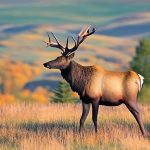
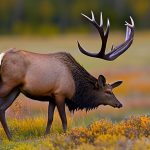
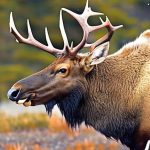
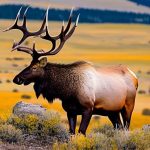
Leave a Reply